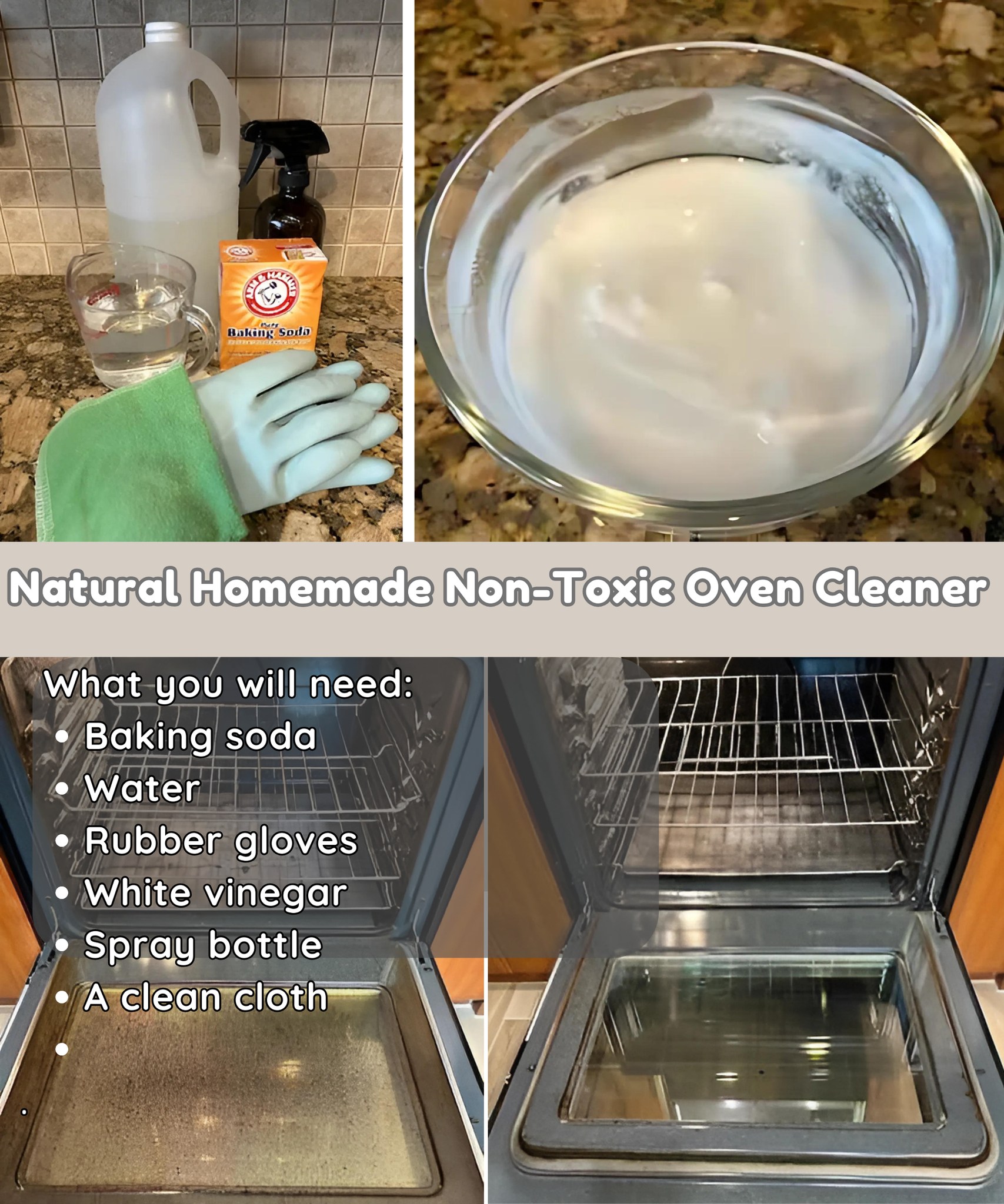ADVERTISEMENT
#### **Instructions:**
1. **Create the Baking Soda Paste:**
In a small bowl, mix 1/2 cup of baking soda with enough water (about 2-3 tablespoons) to form a thick paste. You want it to be spreadable but not too runny. If you like, you can add a few drops of your favorite essential oil at this stage for a pleasant scent.
2. **Apply the Paste to the Oven:**
Start by removing any loose debris from your oven. Then, use a sponge or cloth to apply the baking soda paste to the oven’s interior. Focus on areas with heavy grease and food stains, including the walls, racks, and door. Be generous with the paste, making sure to cover all the dirty spots.
3. **Let It Sit:**
After applying the paste, allow it to sit for at least 15-30 minutes. For stubborn stains or heavy buildup, let it sit for up to 1 hour or even overnight for maximum effectiveness. The baking soda paste will work to loosen the grease and grime.
4. **Spray with Vinegar and Lemon Juice:**
In a spray bottle, combine 1/4 cup of white vinegar with 1-2 tablespoons of lemon juice. Add a small amount of water if needed. Shake the bottle to mix, then spray the solution over the baking soda paste. The vinegar and lemon juice will react with the baking soda, fizzing up and helping to lift away grease and residue.
5. **Wipe Down the Oven:**
After the fizzing reaction has slowed, use a damp cloth or sponge to wipe away the paste and grime. You may need to use a bit of elbow grease on tougher spots, but the paste should come off fairly easily. For any remaining residue, use a clean damp cloth to wipe down the oven until it’s completely clean.
6. **Dry and Buff:**
Once the oven is clean, use a dry cloth to buff the surfaces and remove any leftover moisture. This will leave your oven sparkling clean and streak-free.
### Additional Tips for Oven Cleaning:
– **Oven Racks:** To clean the oven racks, remove them and soak them in a tub of warm water mixed with baking soda for a few hours. After soaking, scrub them with a sponge to remove any grease and grime.
– **Tougher Stains:** If you encounter tough, baked-on stains, you can make a stronger paste by increasing the amount of baking soda and reducing the amount of water. Apply the thick paste to the spots and let it sit longer for better results.
– **Routine Maintenance:** To avoid heavy build-up, clean your oven regularly. Wipe down spills as soon as they happen to prevent them from becoming difficult to remove.
### Benefits of Using Natural Oven Cleaners:
1. **Safer for Your Health:** Non-toxic ingredients like baking soda and vinegar don’t pose the same health risks as commercial oven cleaners. There’s no need to worry about inhaling fumes or exposing your skin to harsh chemicals.
2. **Eco-Friendly:** By using natural, biodegradable ingredients, you’re making an environmentally conscious choice. You also reduce the waste generated from disposable cleaning products and plastic bottles.
3. **Budget-Friendly:** Many of the ingredients used in this DIY oven cleaner are common household items that you likely already have on hand. This makes it a cost-effective cleaning solution compared to buying expensive chemical cleaners.
4. **Pleasant Fragrance:** Unlike the overpowering artificial scents of many commercial cleaners, the natural lemon and essential oils in this solution provide a fresh, light fragrance that’s free from synthetic chemicals.
### Conclusion
Cleaning your oven doesn’t have to involve toxic chemicals or expensive products. With a few simple, natural ingredients like baking soda, vinegar, and lemon juice, you can create a powerful oven cleaner that is not only effective but also safe for your family and the environment. Whether you’re tackling light spills or heavy grease buildup, this DIY non-toxic oven cleaner will leave your oven sparkling clean, fresh, and chemical-free.
Give it a try the next time your oven needs a deep clean, and enjoy the peace of mind that comes with using a natural, homemade solution!
ADVERTISEMENT
